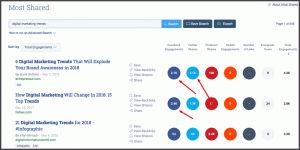Brands that put purpose at the heart of what they do can future-proof themselves in an ever-shifting marketplace. Here’s a framework for becoming purpose-driven.

“For us, it’s about working on things that are focused on making money – that’s really important – but also on improving the world in some way. And we don’t think there’s a conflict in that, by the way. Making money enables you to do more good, to be honest – the two go hand-in-hand.”
Diane Primo, CEO at Chicago-based digtal content marketing and PR agency Purpose Brand, was reflecting on the values that drive the agency’s mission of helping brands put purpose into practice. A framework for doing just that is set out in detail in Primo’s new book, “ADAPT: Scaling Purpose in a Divisive World.”
Picking a purpose
A purpose-driven brand could be a brand driven by one single purpose — health, housing or the environment, for example — or it could imply an embrace of multiple purposes. For Primo, there should be a single focus, although it can manifest itself in a variety of ways.
“You’ve got one overall purpose,” she said. “How you bring it to life might be segmented into other areas, but you generally have a singular area of focus. You might bring that to life by doing educational programs or volunteer work or in the way you run your business.”
She gave the example of BlackRock, the financial planning and investment management firm that has taken financial well-being as its primary purpose. “They’re one of the largest asset holders in the world — trillions of dollars — and how they can bring that to life in many, many ways. They can speak out on issues that relate to long-term financial value like ESG (environmental, social and governance criteria), but it’s all around that singular purpose.”
Engaging with customers — and employees
There is little question that we’re living in the age of purpose-driven customers. “Social justice and the environment are reaching rock star status,” said Primo. “Bigger than professional sports, bigger than fashion, or video games, or tech. They’re becoming things that people care more and more about. And because of that, there’s this emotional switch in people’s minds. They gravitate towards companies that align with their own personal values.”
But don’t overlook the importance of getting buy-in from employees. “They’re the engine. You cannot be a purpose-led company without having people that believe in it, and your employees are really the outgrowth and implementation arm. Unless they believe in what you’re doing, unless they’re engaged, unless you have a culture that’s built on that, you will miss steps in the marketplace. They’re the way your purpose actually comes to life.” What’s more, a well-chosen purpose can be an effective recruitment lever.
The five parts of purpose
In simplest terms, becoming a purpose-driven brand breaks down into five parts (not necessarily consecutive stages): Assess, define, amplify, perform and transcend.
Assess
This is the stage of reflection, homework and research. “Make sure we understand the cultural issues, make sure we understand who we are, it’s a time of self-reflection and evaluation.” She continued: “What I want to be clear about is that that should never go away.”
Definition
“You have the statement that everybody focuses on from a purpose standpoint, but that’s not really the definition stage. It’s all the other things that come with it: How you position your company for that; how you create a strategic and operational framework; how you put in place the alignment mechanisms; how you get really clear about the metrics. That purpose statement may stay the same, but the strategy is always evolving.”
Amplify
Amplification implies integration and alignment. “People forget about this. Do not forget to align your board.” Again, part of that is that having a purpose is consistent with being profitable. “Align your employees, align your clients, align your suppliers.”
The next step in amplification is a “story-telling” phase. “What is your manifesto and what does it mean?” Along with alignment comes the need for conversion and persuasion.
Perform
ESG, for example, need not just be an investment strategy — it can be a long-term performance strategy too. “As you look at ESG,” she explained, “you need to think about your own company, your own values, your purpose, and make sure that KPIs are pulled into that from a measurement standpoint.”
Transcend
The final part of the framework relates to transcendence. There can be a moment when the company actually feels “elevated,” said Primo — but it depends on culture. “Have you built a culture that embraces this and operates using unspoken rules? I think that’s really important. We all get it, we all get it naturally.”
Primo offers examples of companies that have transcended the rules and just become naturally purpose-driven. “Microsoft is a company like that, Patagonia has long been a company like that. I believe Nike is a company like that.”
What it means for marketers
Because reputation is so valuable to brands, encroaching on issues like social justice does carry risk. “From a marketer’s standpoint, this is significant,” she said. “You’ve got to think about how you take your purpose and do this authentically. But you also want to future-proof your marketing strategy for if the purpose fails.” That can happen, Primo admits.
“You also need agility. The culture is fluid, it’s moving on you. You’ve got an incredibly diverse population; 31% is white male and the rest is something else. You have to understand different points-of-view — and empathy has never been more important than it is today for marketers.”
At the end of the day, purpose builds resilience, Primo argues. “At its essence, my book is about how you make a company more resilient, able to withstand the ups and downs that are going to happen in the reputational market-place in an environment that is shifting at an unbelievable rate.”
The post Why being purpose-driven goes hand-in-hand with being profit-driven and resilient appeared first on MarTech.
(29)
Report Post





